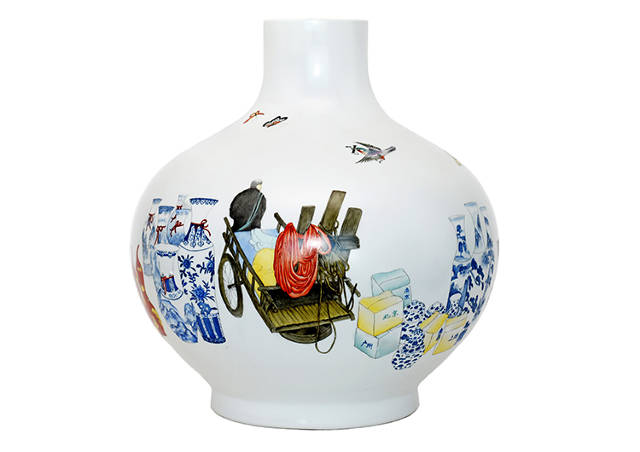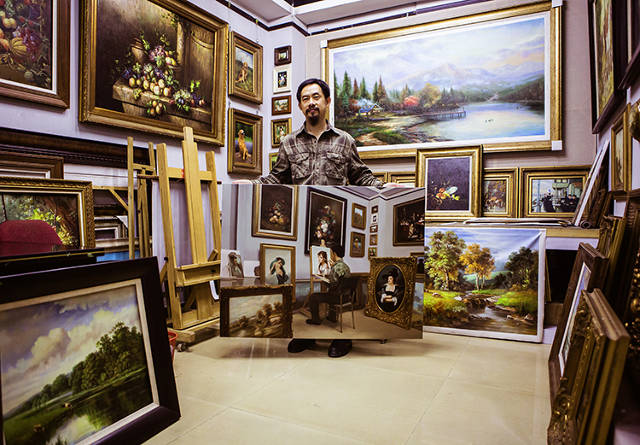IN THE NAME OF ANTI-DESIGN, A SELF-PROCLAIMED NON-ARTIST COMMISSIONS CHINESE ARTISANS SPECIALIZING IN COUNTERFEITS TO DEPICT THE REAL THING--THEMSELVES.
After four years of design school, Zhenhan Hao was fed up with design. The young Chinese national and self-admitted non-artist had grown tired of chasing down trends or attempting to fashion his own. What really interested him, he says, was “something most designers hate--anti-design.”
What is anti-design, exactly? Hao doesn’t give a clear-cut definition, but he hazards that you just know it when you see it. For him, it was the fake egg scandal that hit China a couple of years ago. “I was shocked and amazed by the fact that a fake egg can be produced by using artificial materials, man-made eggs sold as genuine chicken eggs,” Hao tells Co.Design. “Since then, I have focused my research on the subject of imitation and its social, political, and economic implications.” His imposter-egg inspired studies of Chinese counterfeit culture led to the “Imitation” project, which delves behind the scenes of the huge industry of art and ceramic knockoffs.

With "Imposter," rather than simply document the (dis)contents of the sprawling art-making complexes that churn out fake antiques and masterworks daily, Hao took a more nuanced undercover approach. He assumed the role of a well-to-do client, with the capital to commission works from specific artisans, each one specializing in their own brand of forgery.
But this client came with no ordinary paint-me-a-picture commission. He enlisted the artisans--some 40 of them, all from Jingdezhen, China’s porcelain industry center, and Dafen Village, a hub for counterfeit canvases, among other things--as collaborators. Hao then asked them to produce personal works in the style of the masters they’ve learned to emulate. “I built relationships with them before I gave any commission, so that I could reveal the best part of them and ask of them to put some of themselves into the production process,” he explains.

Working with Hao over email and in person, the artisans produced a vast array objects spanning painting, ceramics, even fine garment-making. The artworks offer a portrait of their makers, like the porcelain craftswoman who incorporated scenes of her daily work life onto the sides of otherwise traditional-style vases. An expert Van Gogh imitator, “Mr. Zhao,” rendered a snapshot of his bedroom with the same emotive brushwork and color palette as the Dutch painter.
“That is his self-portrait,” Hao says. “Even though he is not in the painting, each object represents him and his story. You can actually see the profound influence of this painting on his life.”






 Reply With Quote
Reply With Quote